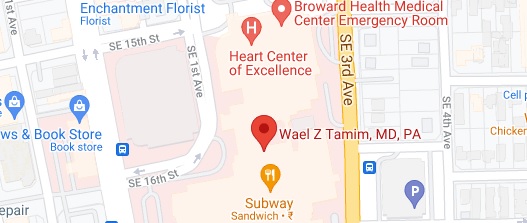What are Lung Nodules?
Lung nodules also known as pulmonary nodules are abnormal or unusual growths in the lungs formed by masses of cells. They are small, round growths, each no greater than 3 cm in size, that can develop in one or both lungs. They may be benign (non-cancerous) or malignant (cancerous)in nature although most lung nodules are usually benign.
Causes of Lung Nodules
The most common causes of lung nodules include:
- Infectious Inflammation: Inflammation may occur from infections such as:
- Tuberculosis
- Pneumonia
- Histoplasmosis
- Cryptococcosis
- Aspergillosis
- Lung abscess
- Non-infectious inflammation: This includes:
- Rheumatoid arthritis
- Sarcoidosis
- Wegener granulomatosis
- Benign tumors
- Hamartomas
- Papillomas
- Bronchial adenoma
- Malignant tumors
- Primary or metastatic lung cancer
- Lymphoma
- Enlarged lymph nodes
- Lung cysts
- Smoking
- Exposure to certain chemicals
- Scar tissue
Symptoms of Lung Nodules
Lung nodules usually do not produce any symptoms. Symptoms that may be produced depends on the condition that causes the lung nodules and may include:
- Persistent coughing
- Coughing up blood
- Chest pain
- Shortness of breath
- Wheezing
- Repeated respiratory infections causing bronchitis or pneumonia
- Fever
- Fatigue
- Weight loss
Diagnosis of Lung Nodules
Your doctor will review your medical history and symptoms and based on this a physical examination will be performed. The following diagnostic tests may be recommended:
- Chest x-rays: Chest radiography is performed to detect lung lesions.
- Blood tests: Blood tests are performed to look for certain substances in the blood that can indicate infection or inflammation.
- CT Scan: This scan uses multiple x-rays to produce detailed cross-sectional images of the lungs to detect shape, size, and number of nodules.
- Positron Emission Tomography (PET) scan: This involves injecting a small amount of radioactive sugar that is absorbed by high energy-consuming cancer cells making them clearly visible on imaging scans.
- Bronchoscopy: A flexible tube with a camera is passed through the mouth or nose into the airways of the lung for evaluation.
- Biopsy: A sample of the nodule is taken and observed under the microscope.
Treatment for Lung Nodules
Usually, for small, non-cancerous nodules not causing any symptoms treatment is not necessary. Common treatment techniques for lung modules otherwise include:
- Medications: Your doctor will recommend antibiotics or antifungal medications if the nodules are associated with infections.
- Chemotherapy: In this therapy, cancerous cells are destroyed using medications that are commonly provided through injections. Chemotherapy may be administered after surgery or as the main treatment depending on the severity of cancer.
- Radiation Therapy: High-energy radiation is used to destroy cancer cells. Radiation may be performed after surgery to destroy any remaining cancer cells or as the main treatment if the cancer is extensive.
- Targeted Therapy: In this method, certain drugs are used to destroy specific molecules in cancer cells preventing their growth.
- Immunotherapy (biologic therapy): This treatment method helps to strengthen your immune system so that your body can destroy the cancer cells.
- Surgery: Surgicaltechniquesthat maybe recommended include:
- Thoracotomy: In this technique, a large incision will be made between the ribs and the lung nodules will be surgically removed.
- Video-Assisted Thoracoscopic Surgery (VATS): This procedure utilizes a special instrument called a thoracoscope that has a built-in camera to view the pulmonary nodules which are removed with small surgical instruments. VATS may be performed to remove the affected lobe of the lung, a procedure called a lobectomy.


